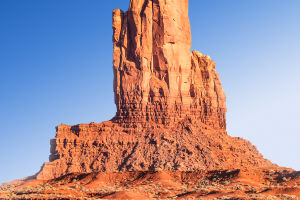A plateau refers to an area that is more than 1,000 meters above sea level with a relative height of more than 500 meters, characterized by relatively flat or undulating terrain. It is formed through long-term continuous large areas of crustal uplift movement.
Some plateaus have a wide and flat surface, with little undulation, while others have rolling hills and great variation in terrain.
The most essential feature of a plateau is the low relative difference in elevation of the terrain but with quite a high elevation.
They are widely distributed, and together with enclosed basins, they cover approximately 45% of the Earth's land area.
The formation of highlands is closely related to the formation of the Earth.
The highest plateau in the world is China's Qinghai-Tibet Plateau, whereas the largest is Brazil's Plateau.
The plateau area receives greater solar radiation and has longer sunshine hours, and the solar energy resources are abundant.
The plateau area's water has a lower boiling point than 100℃, resulting in uncooked rice when cooked in a standard rice pot.
The plateau has become a training "treasure" for the world's sports community in long-distance running, marathon, walking, and other endurance projects.
Athletes from the African highlands won five titles in long-distance running and marathon, as well as five runner-ups and two third-place finishes during the 19th Olympic Games held in the highland city of Mexico City in 1968.
Before going to the plateau area, it is essential to undergo a physical examination at a hospital and only depart if you are sure that there is no problem with your heart, lungs, and other major organs.
People who adhere to physical exercise for years and have good physical fitness are less likely to experience plateau reactions and can heal themselves quickly.
However, they should not be careless and try to be strong. Especially before entering a new altitude, there should be one or two days of gradual adaptive exercise.
In the absence of adaptation and preparation, do not suddenly enter the area above 5,000 meters above sea level to prevent sudden unpredictability.
Upon arriving at the plateau, it is advisable to eat more carbohydrates and easily digestible food, drink more water to keep your body fully hydrated, and avoid having a heavy dinner. It is best not to drink alcohol and smoke but to eat more fruits, vegetables, and other vitamin-rich foods.
When you reach the plateau, everyone will experience varied degrees of shortness of breath, chest tightness, breathing difficulty, and other signs of oxygen shortage.
This does not imply that you are not adjusting to the plateau. With proper self-protection measures, such as appropriate rest, these symptoms usually improve or subside within 2 to 4 days.
If you travel to the plateau by airplane, high-altitude sickness symptoms generally arise in about 12 to 14 hours.
Therefore, upon arrival, it is essential to avoid strenuous activities and immediately rest in bed. Otherwise, it will take more time to adapt once you feel the reaction.
It is crucial to note that if the reaction symptoms become more severe, especially when resting, you should immediately inhale oxygen and seek medical treatment.
Patients with plateau pulmonary edema and plateau cerebral edema, which rarely occur, must be given a lot of oxygen and quickly transferred to a lower altitude area while being treated with medication.
Some people often use oxygen to relieve chest discomfort.
Although oxygen inhalation can temporarily relieve the symptoms of chest tightness, shortness of breath, and difficulty in breathing, the symptoms will reappear after stopping oxygen inhalation, which delays the time to adapt to the plateau.
If the symptoms are not severe, it is better not to inhale oxygen, as it can make you adapt to the plateau environment faster.


